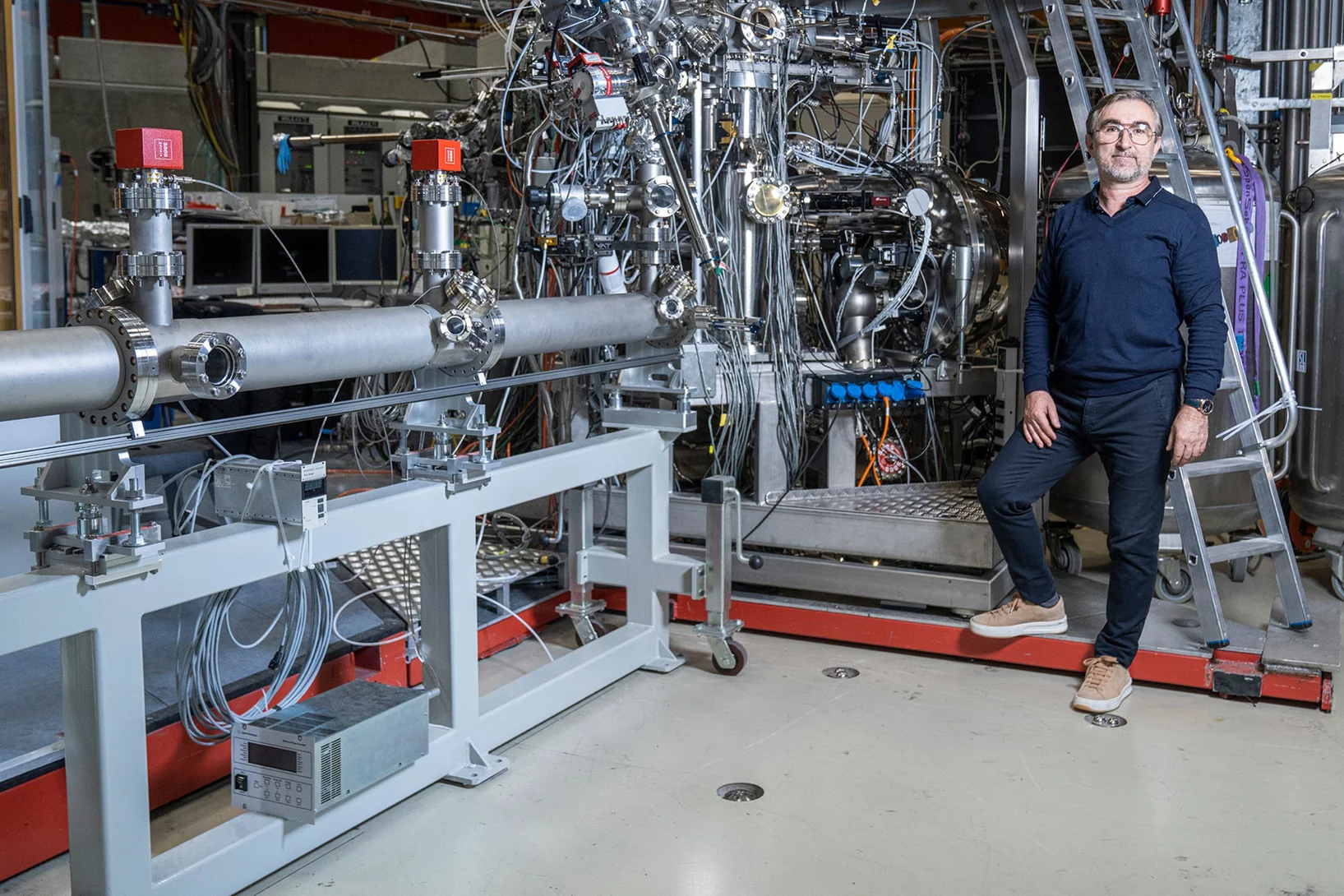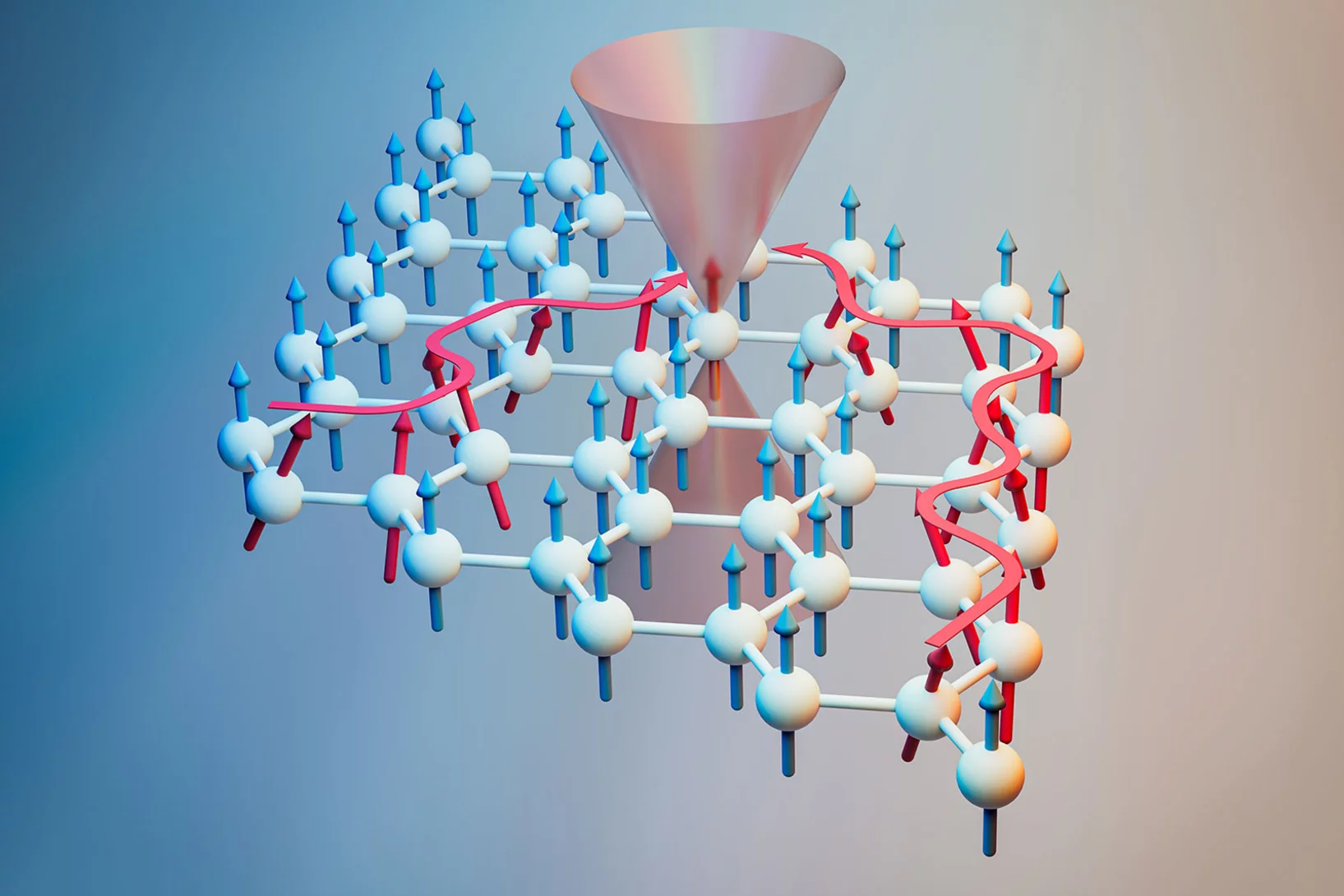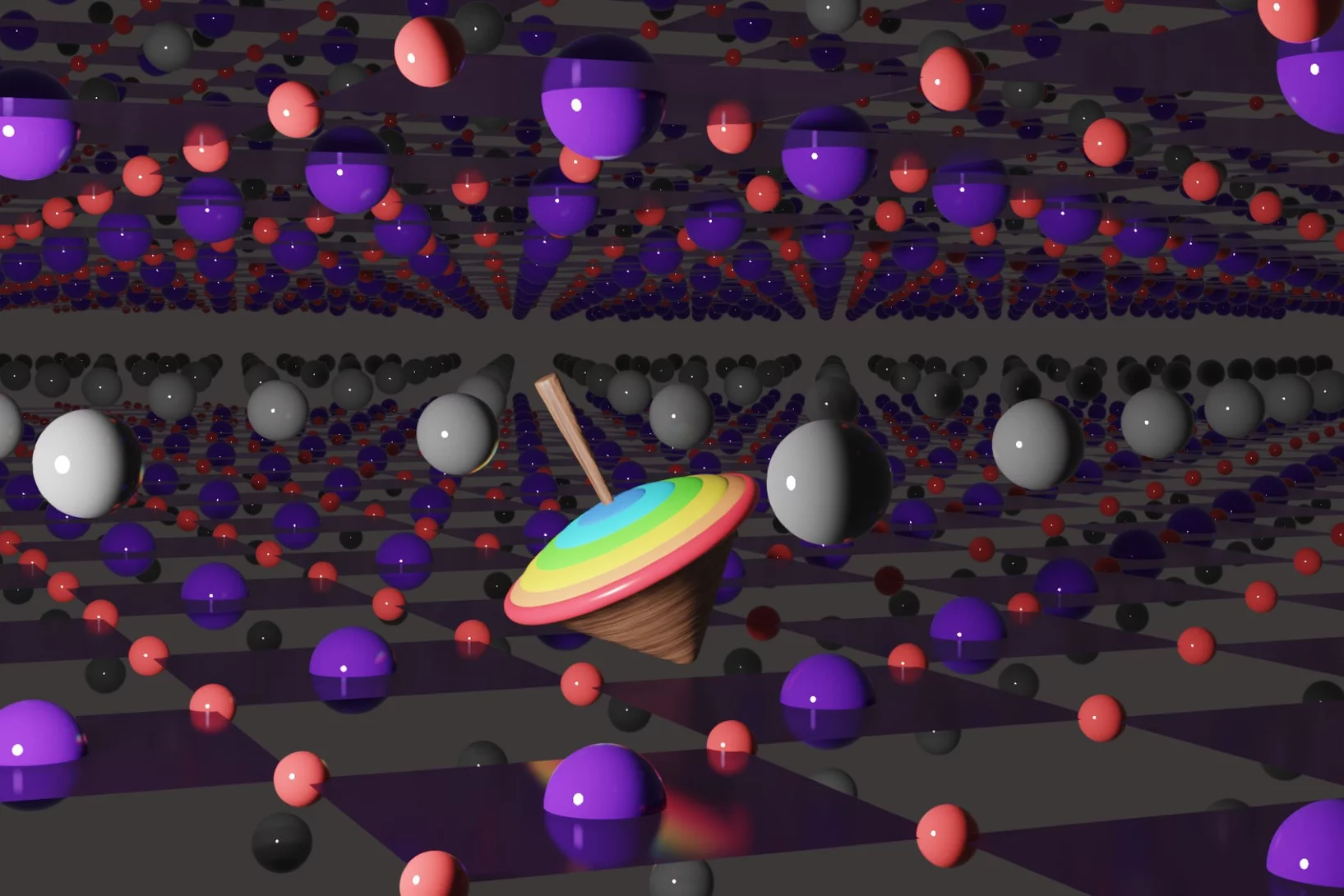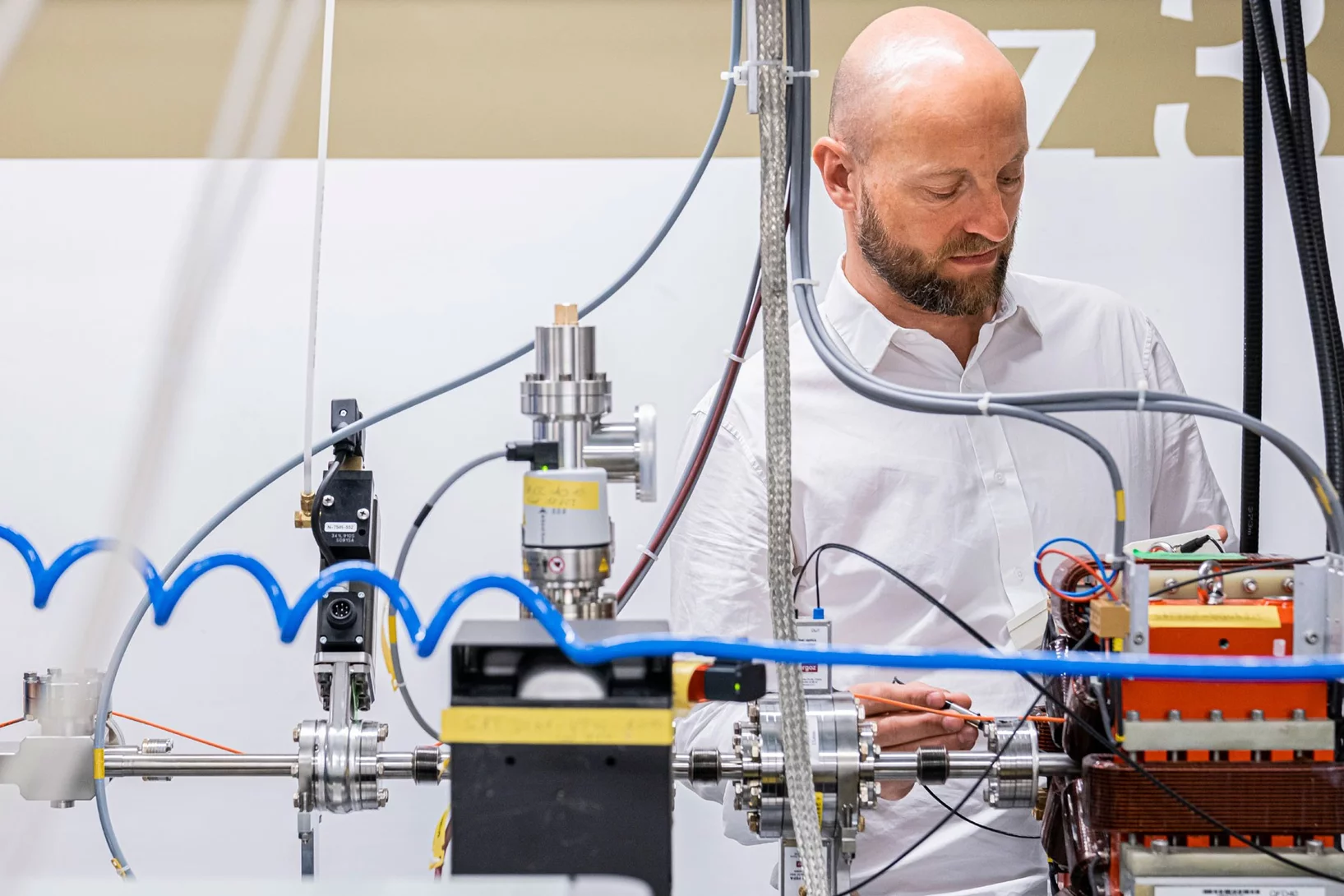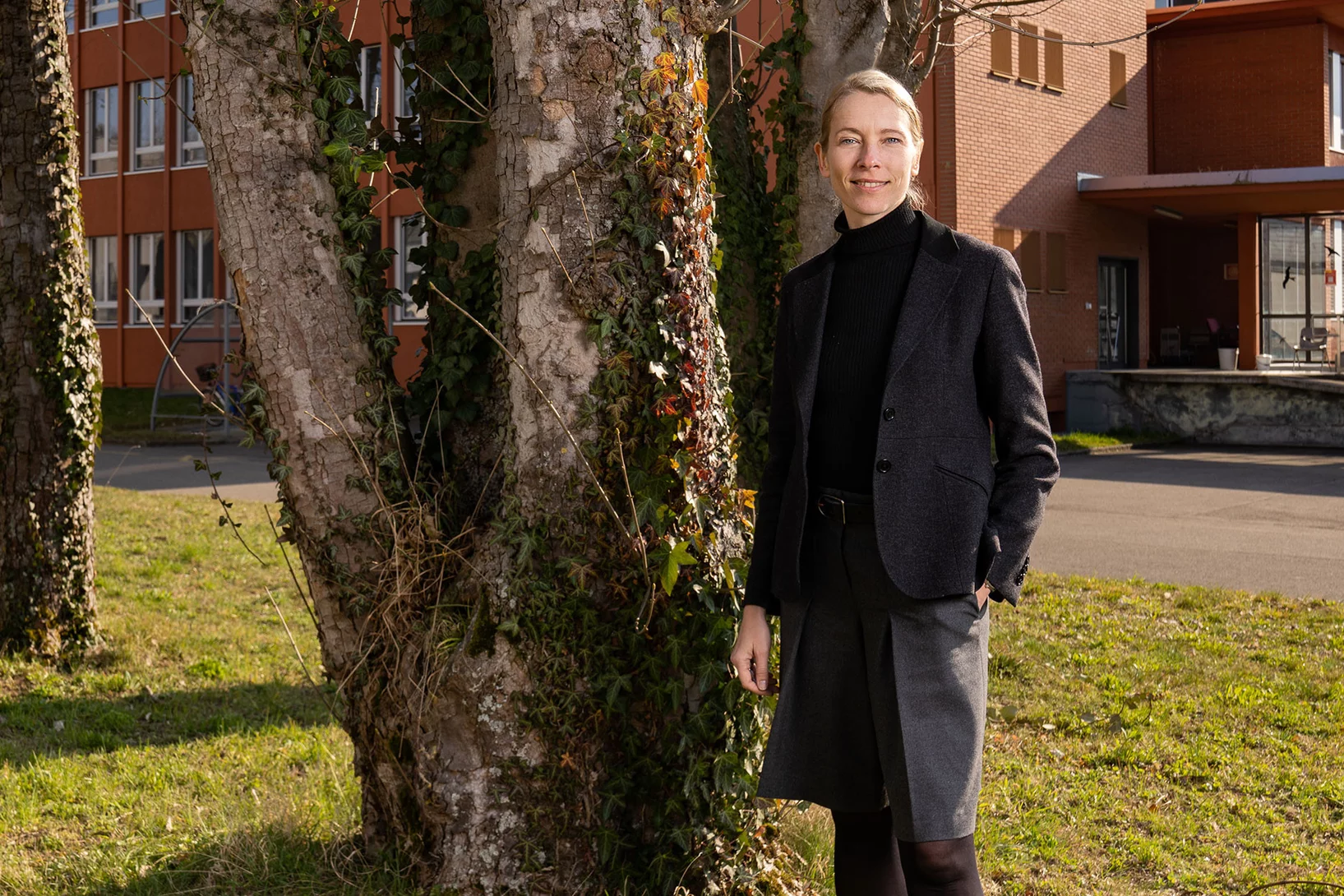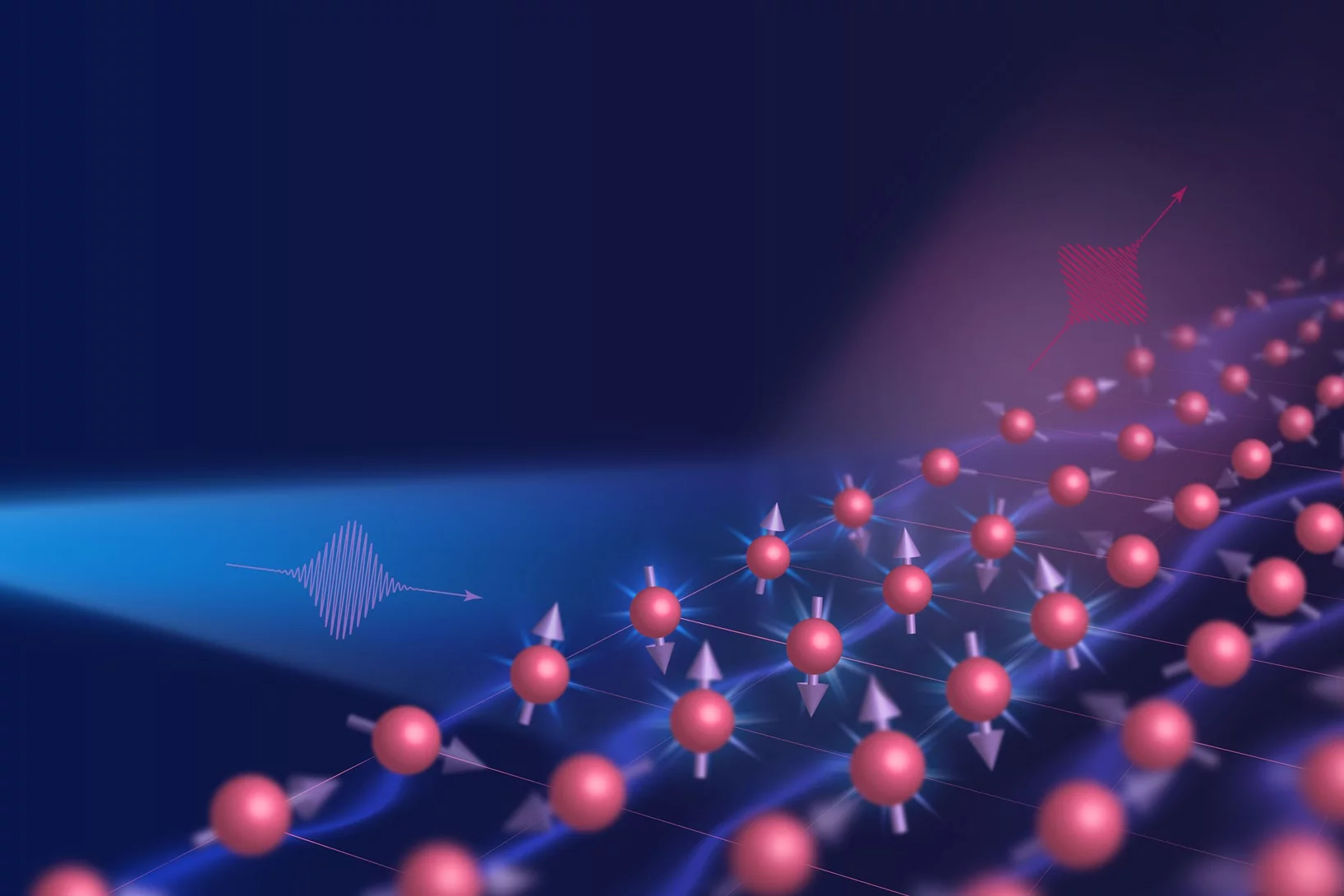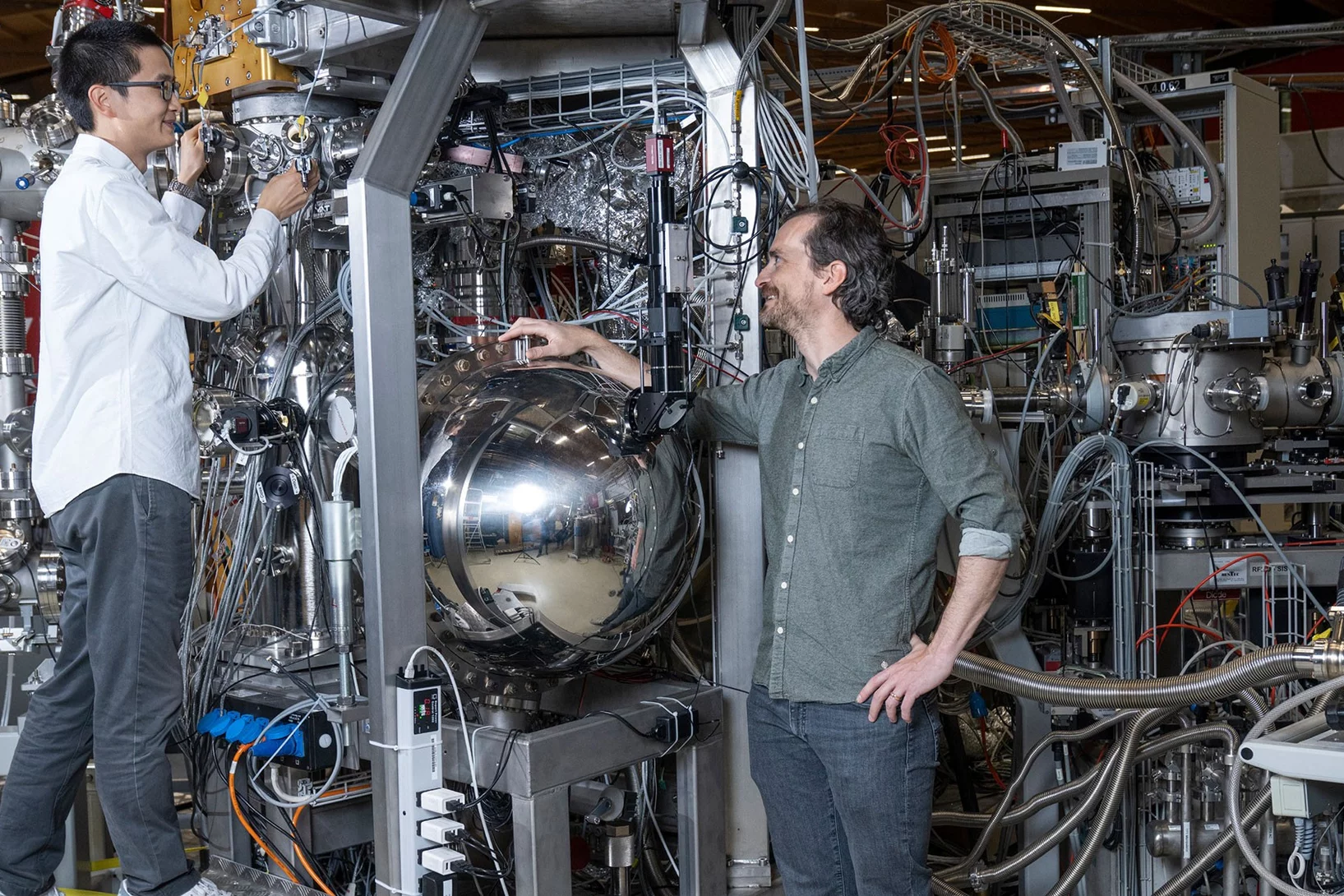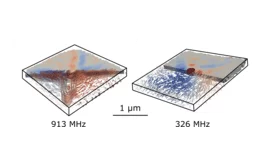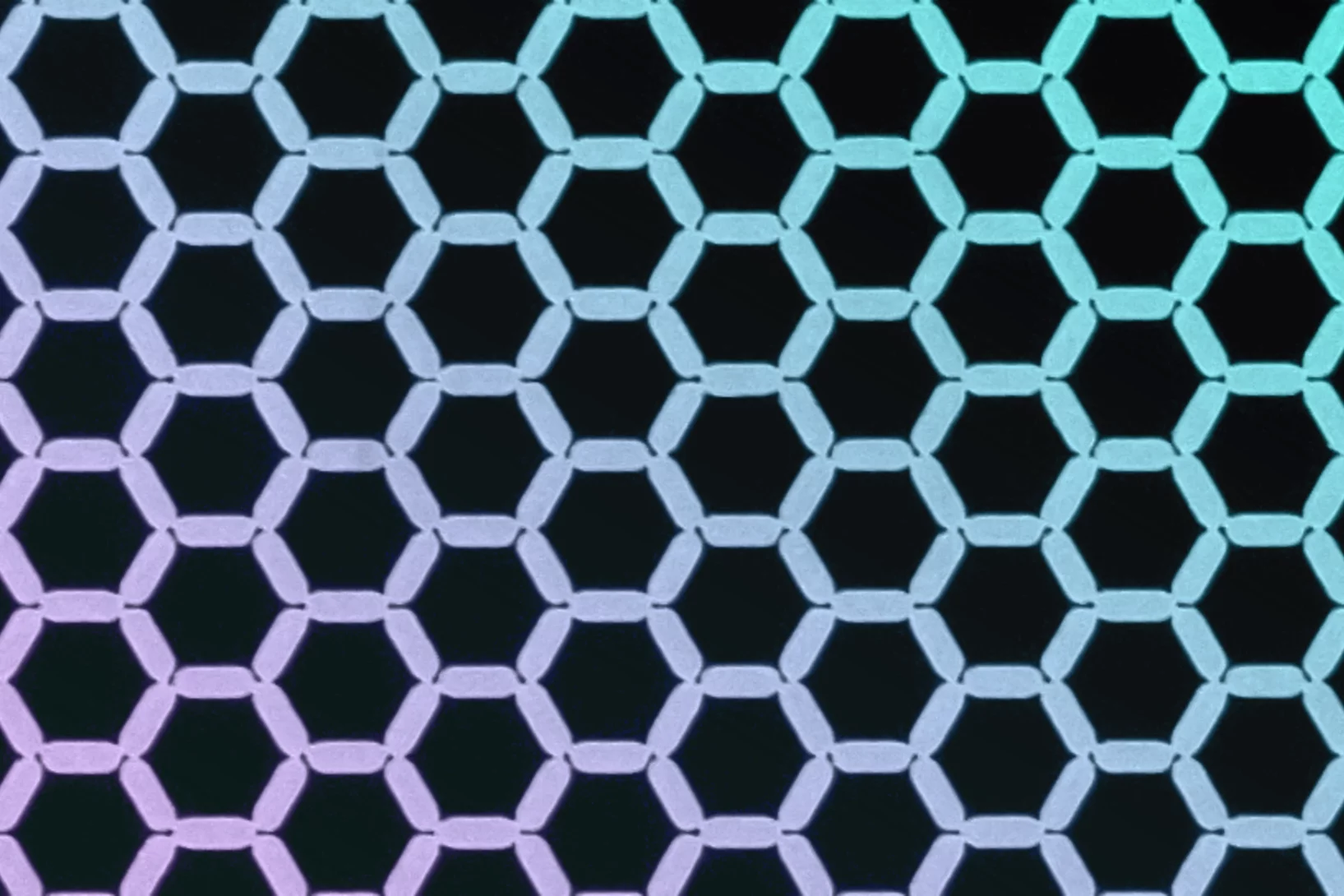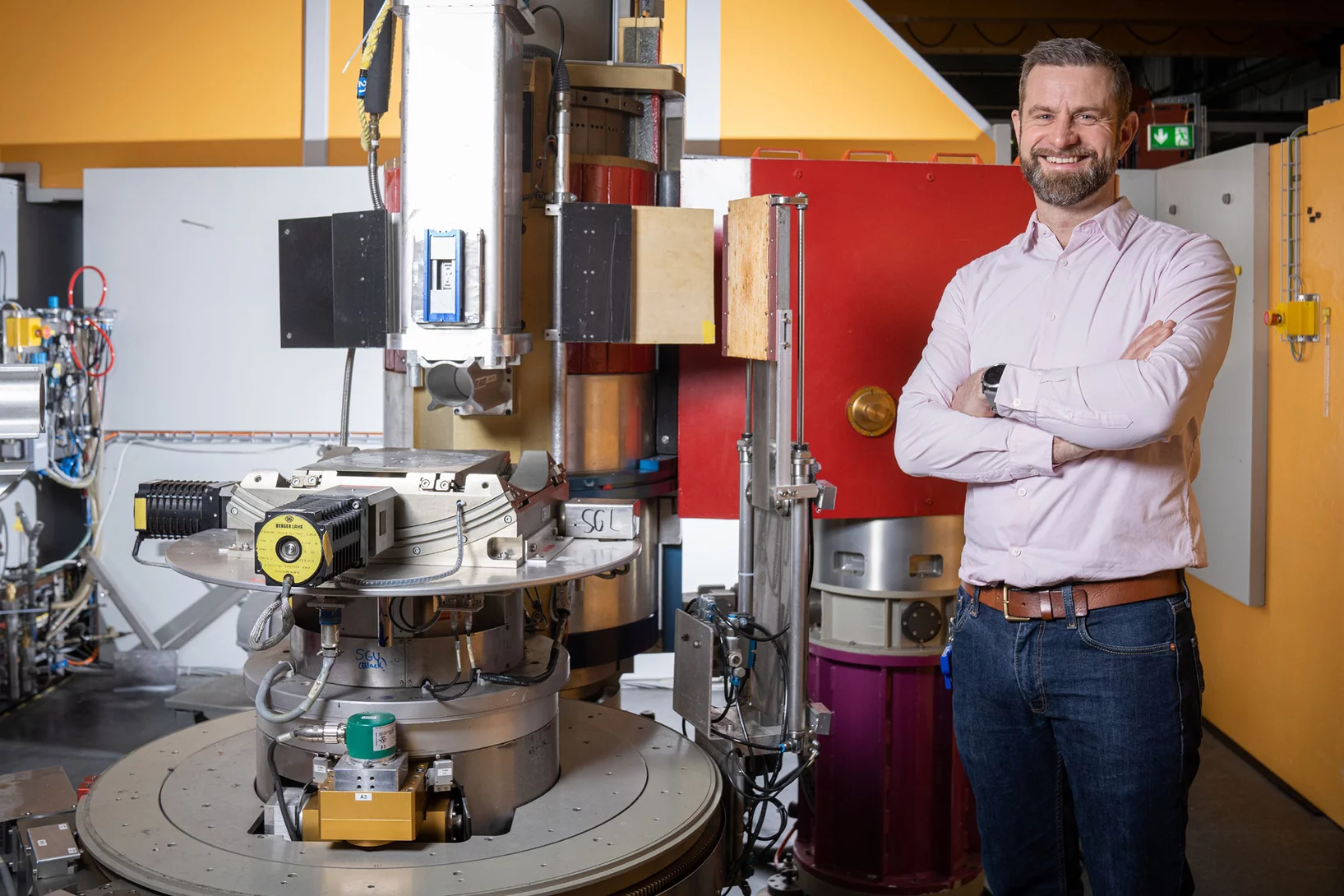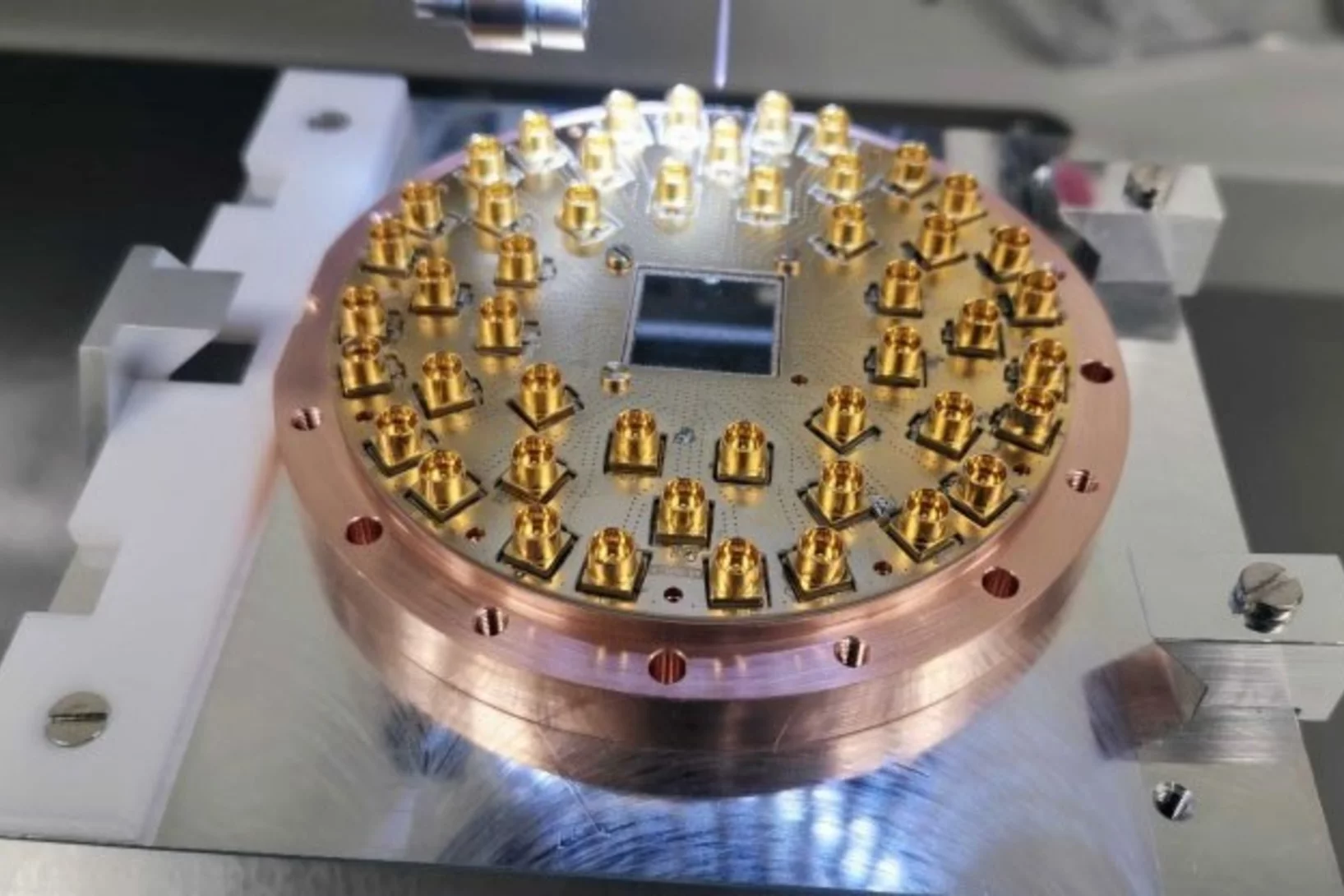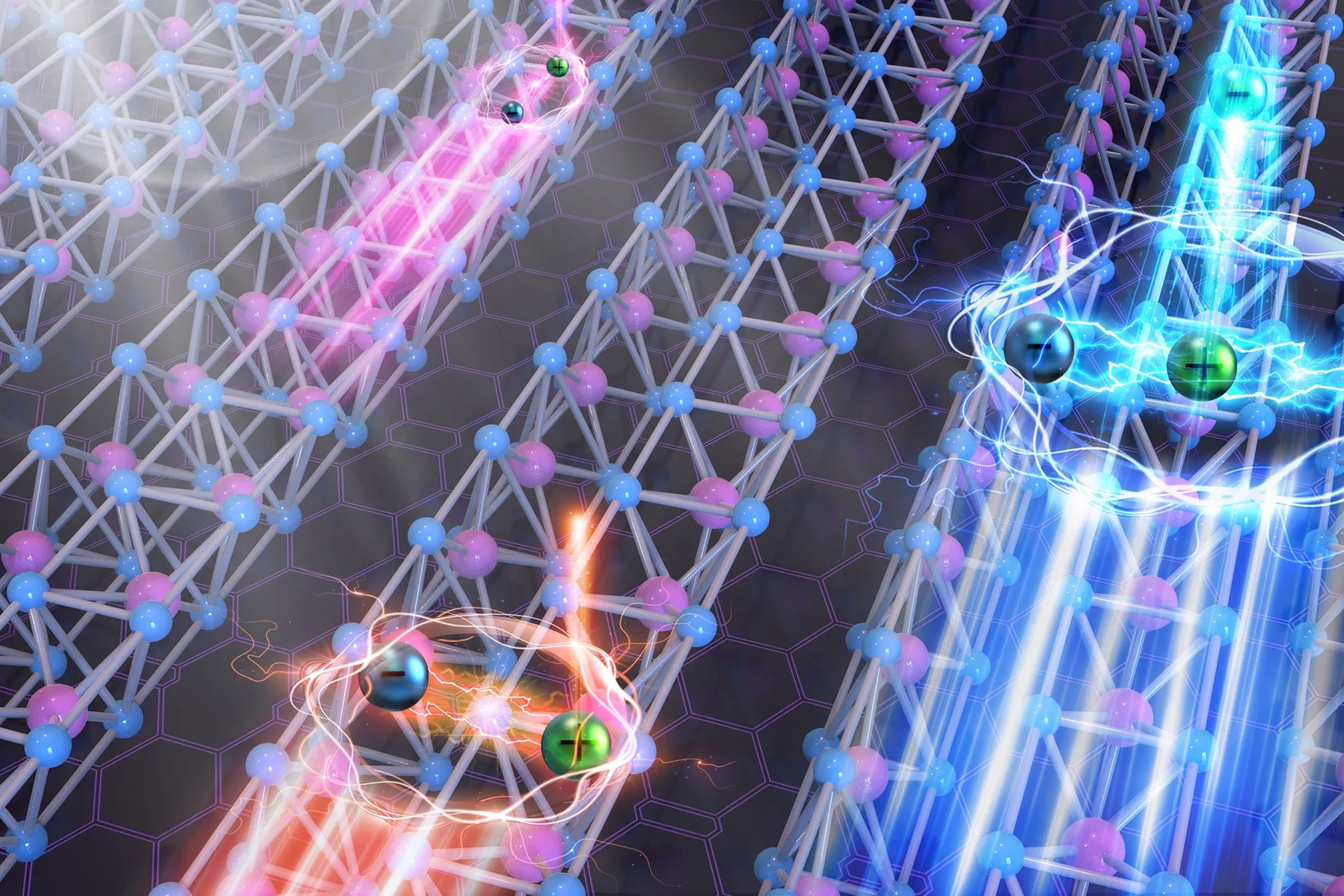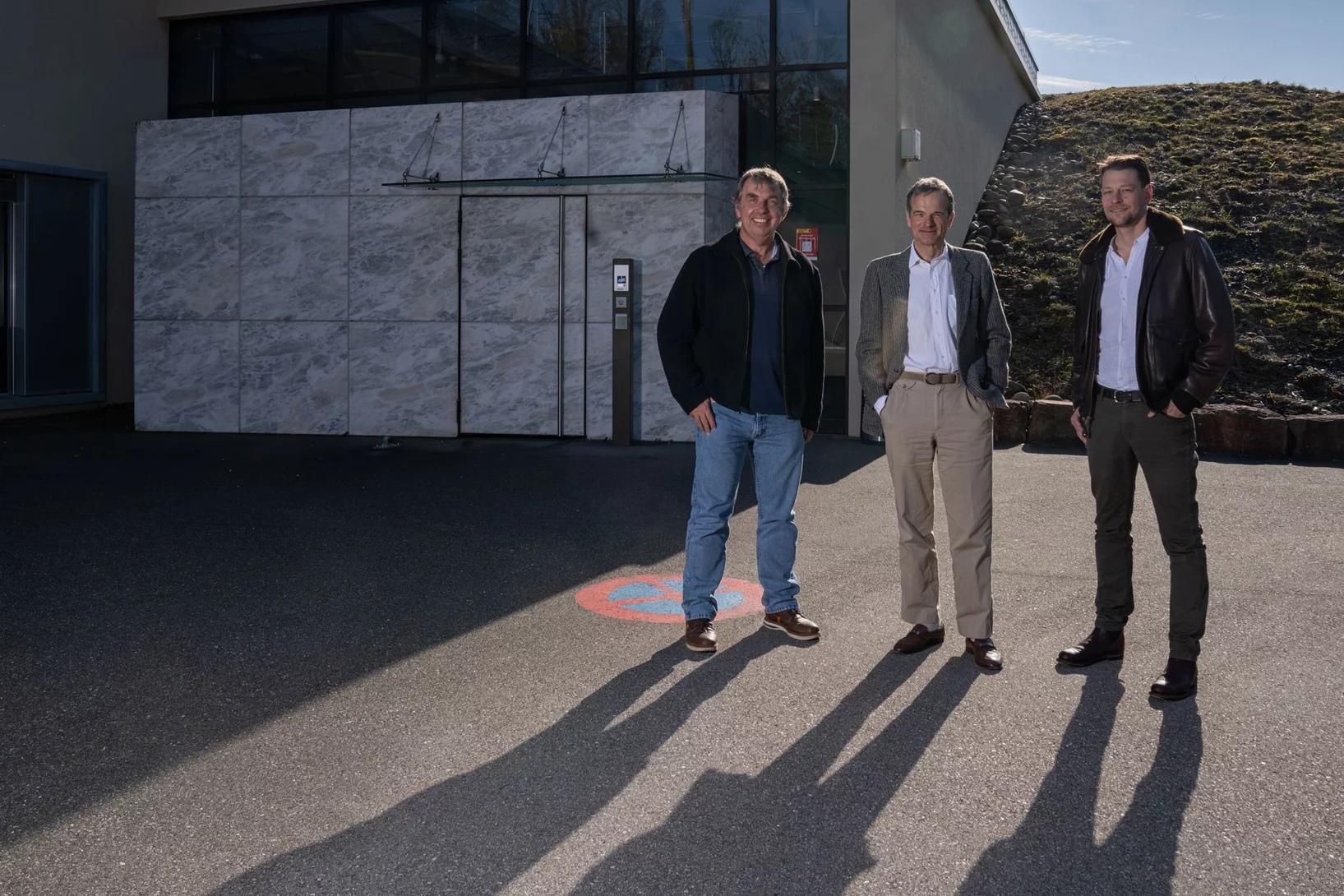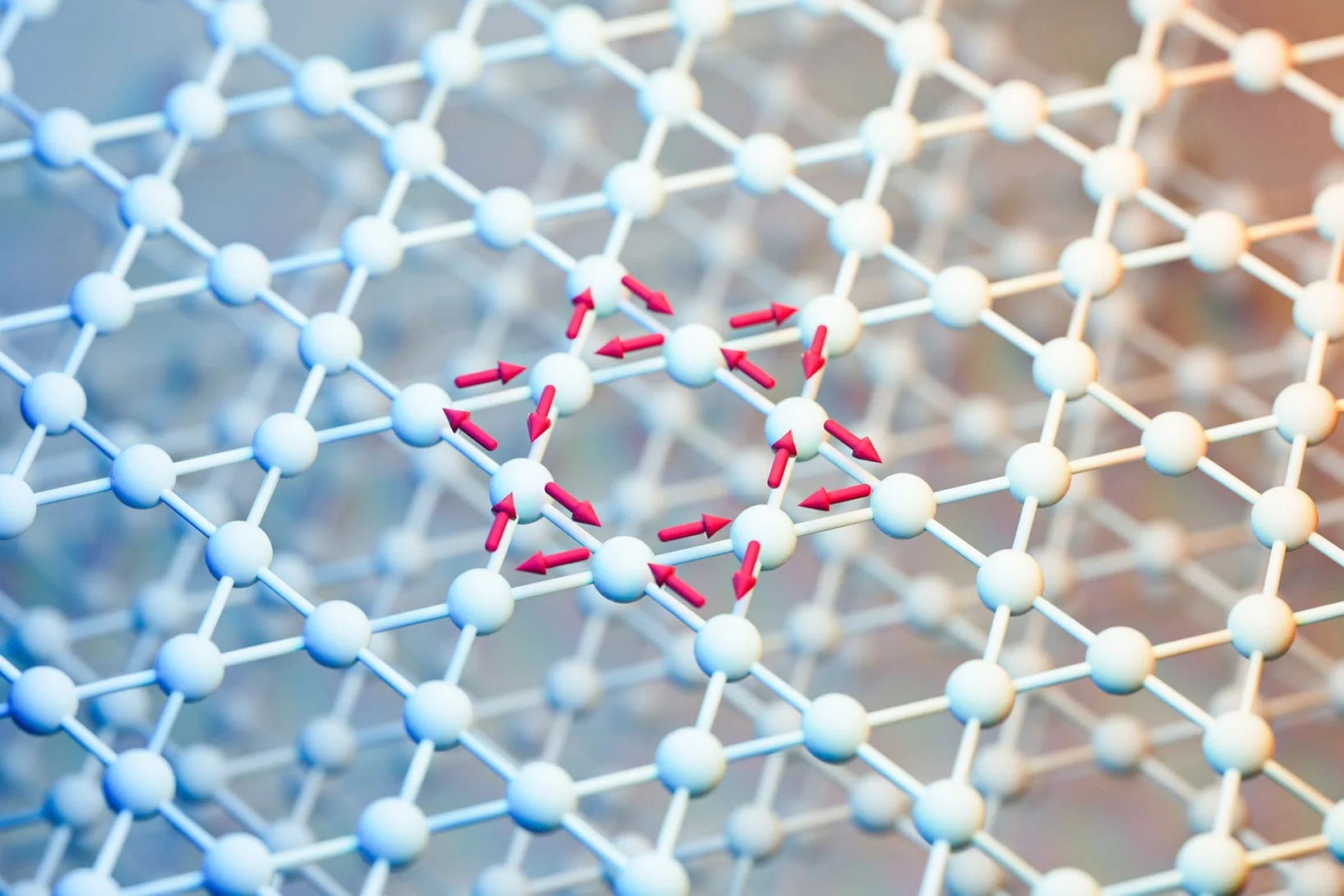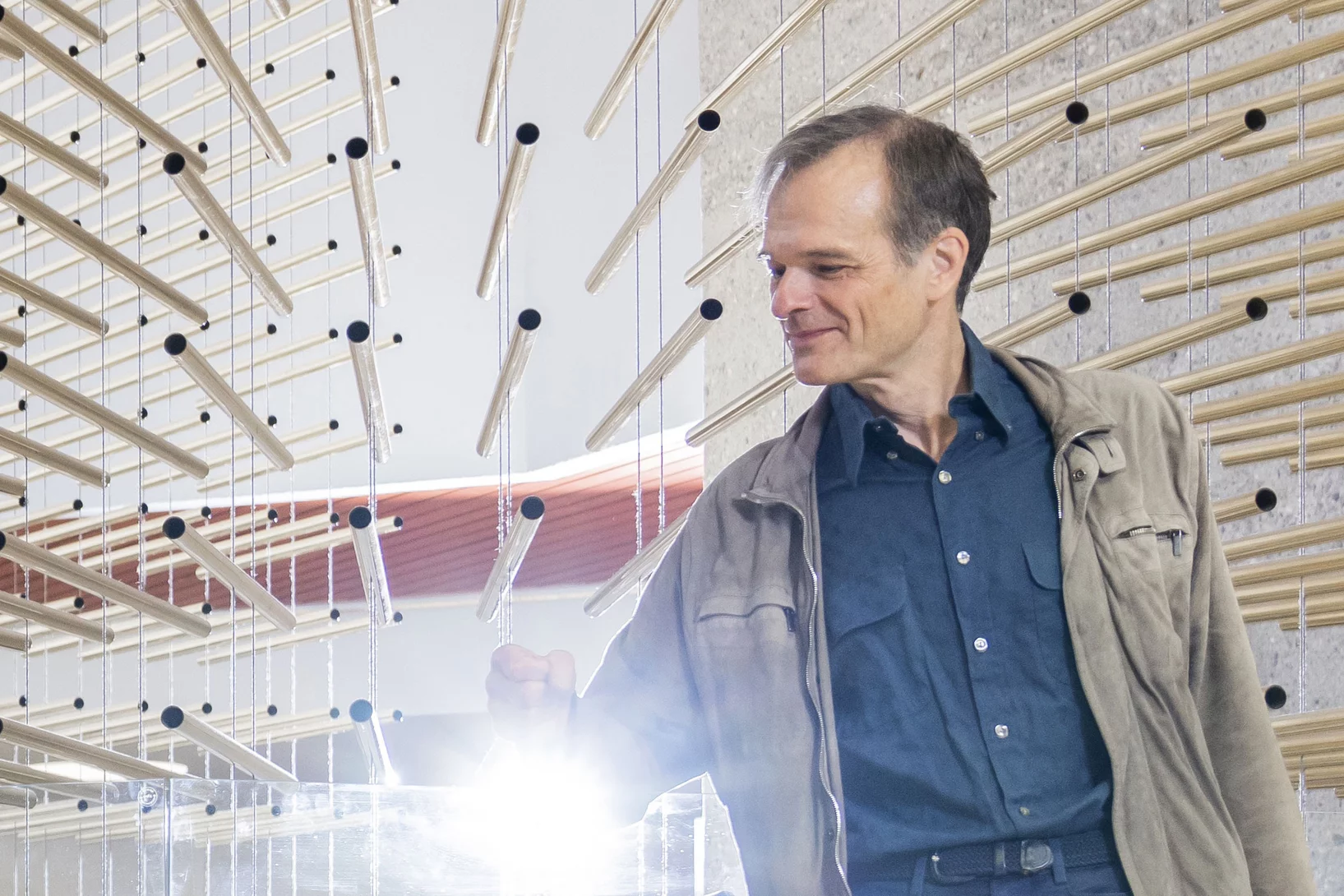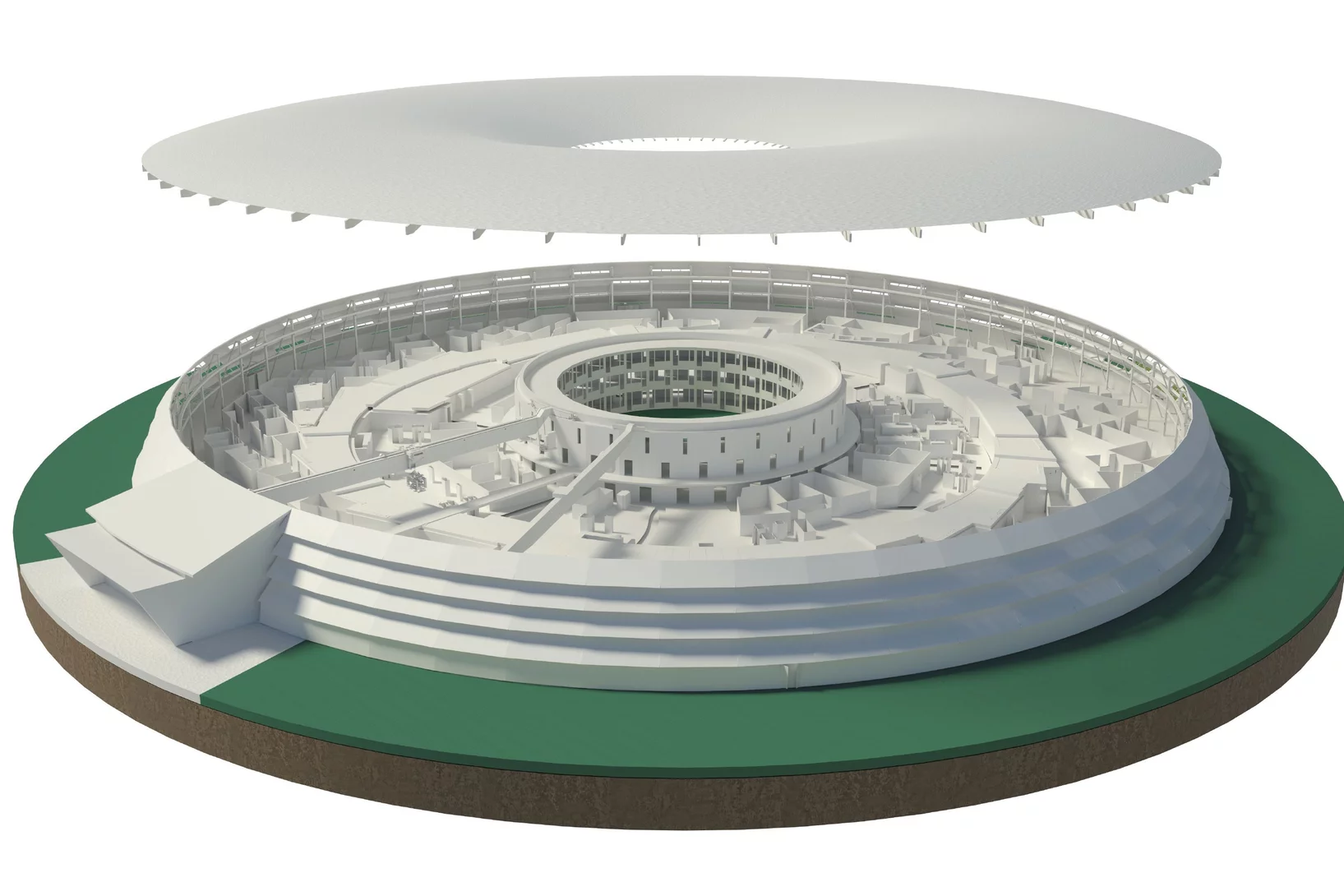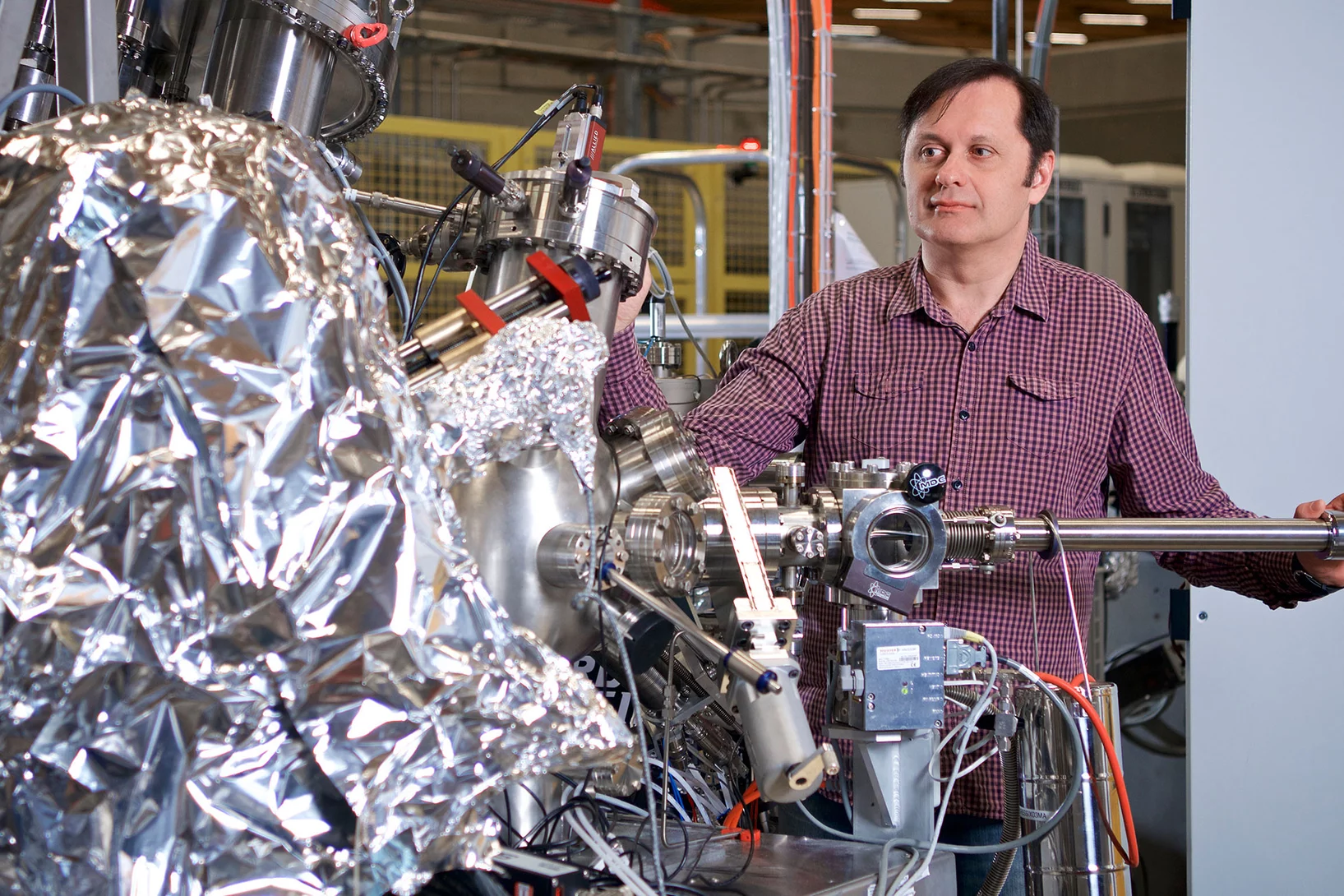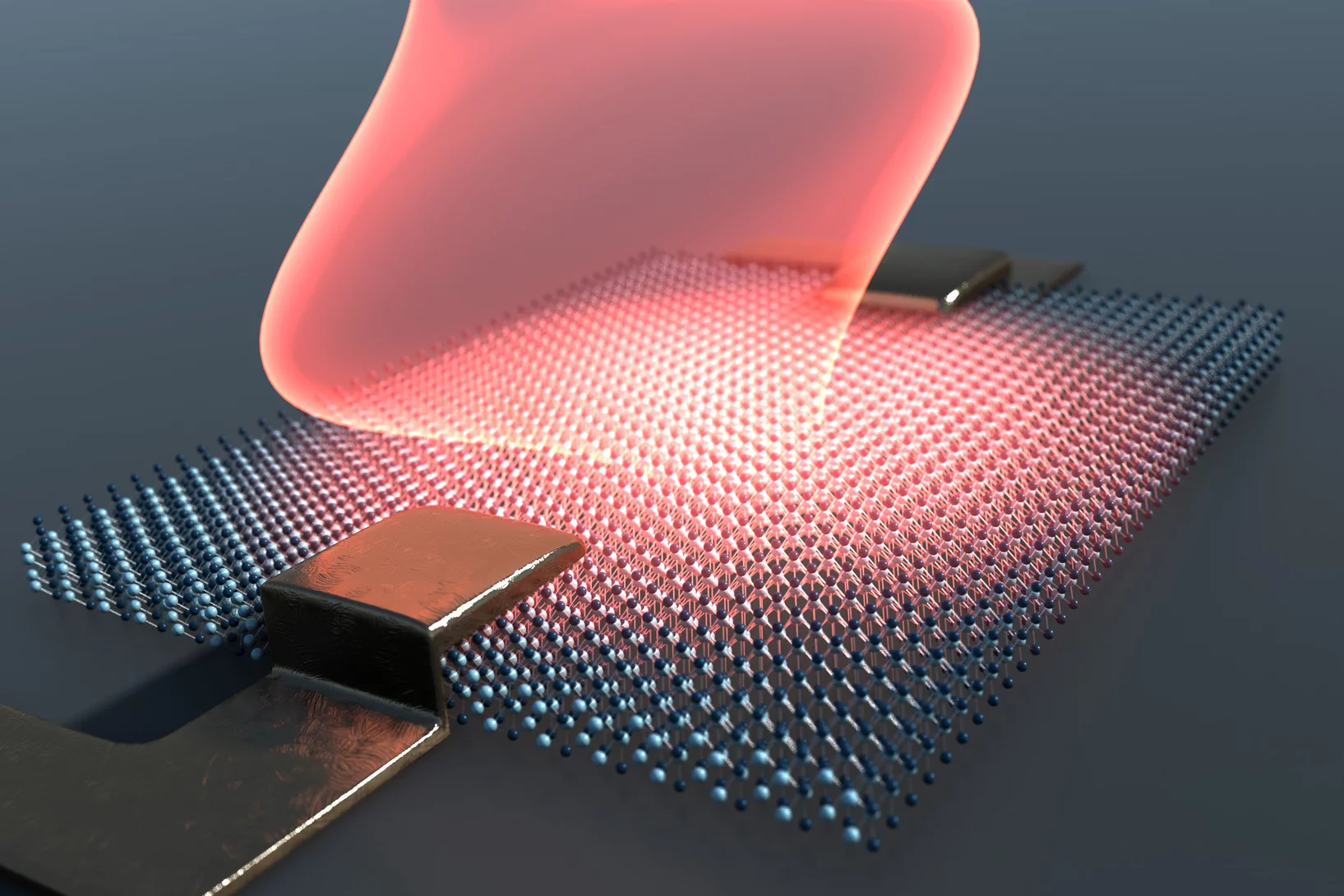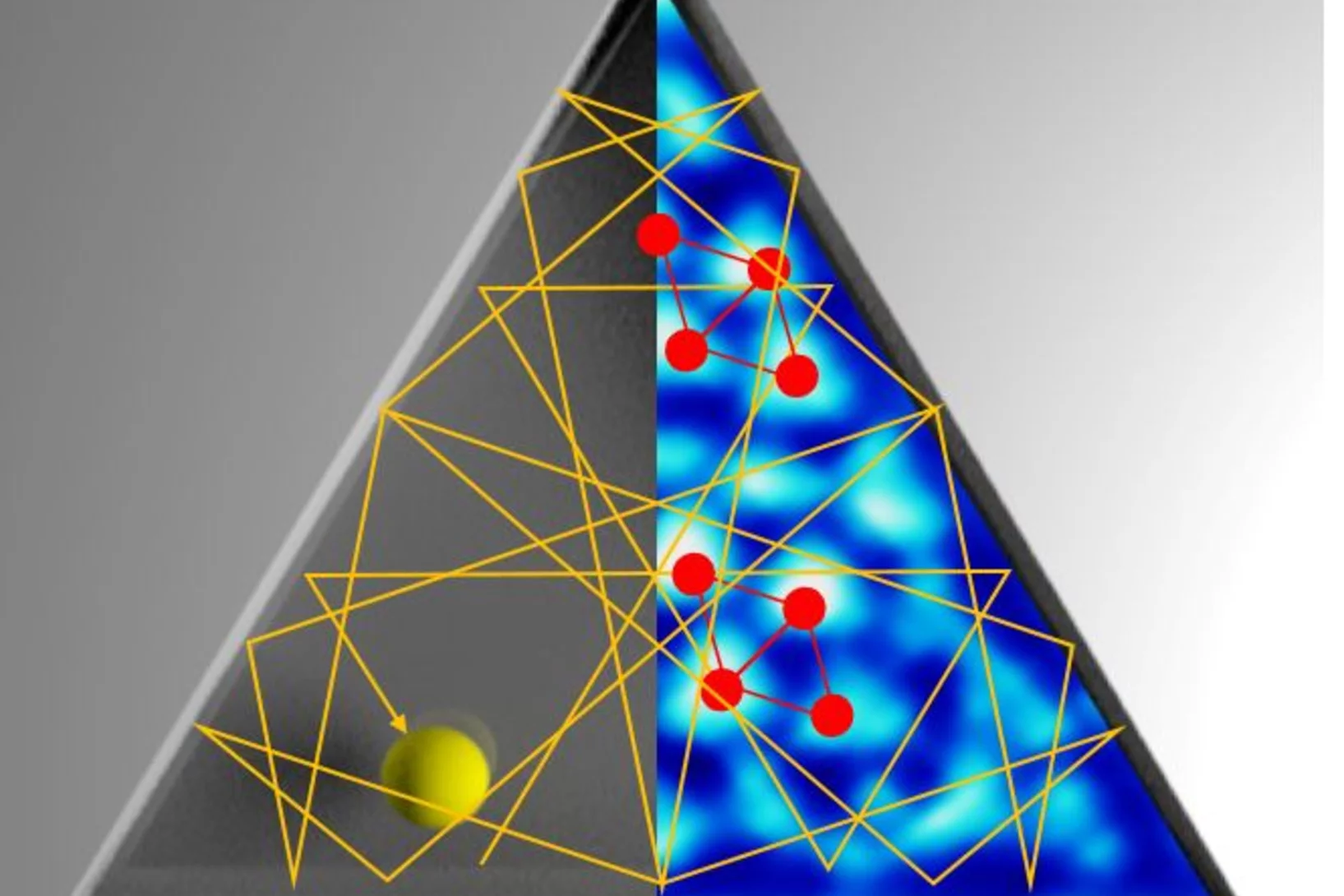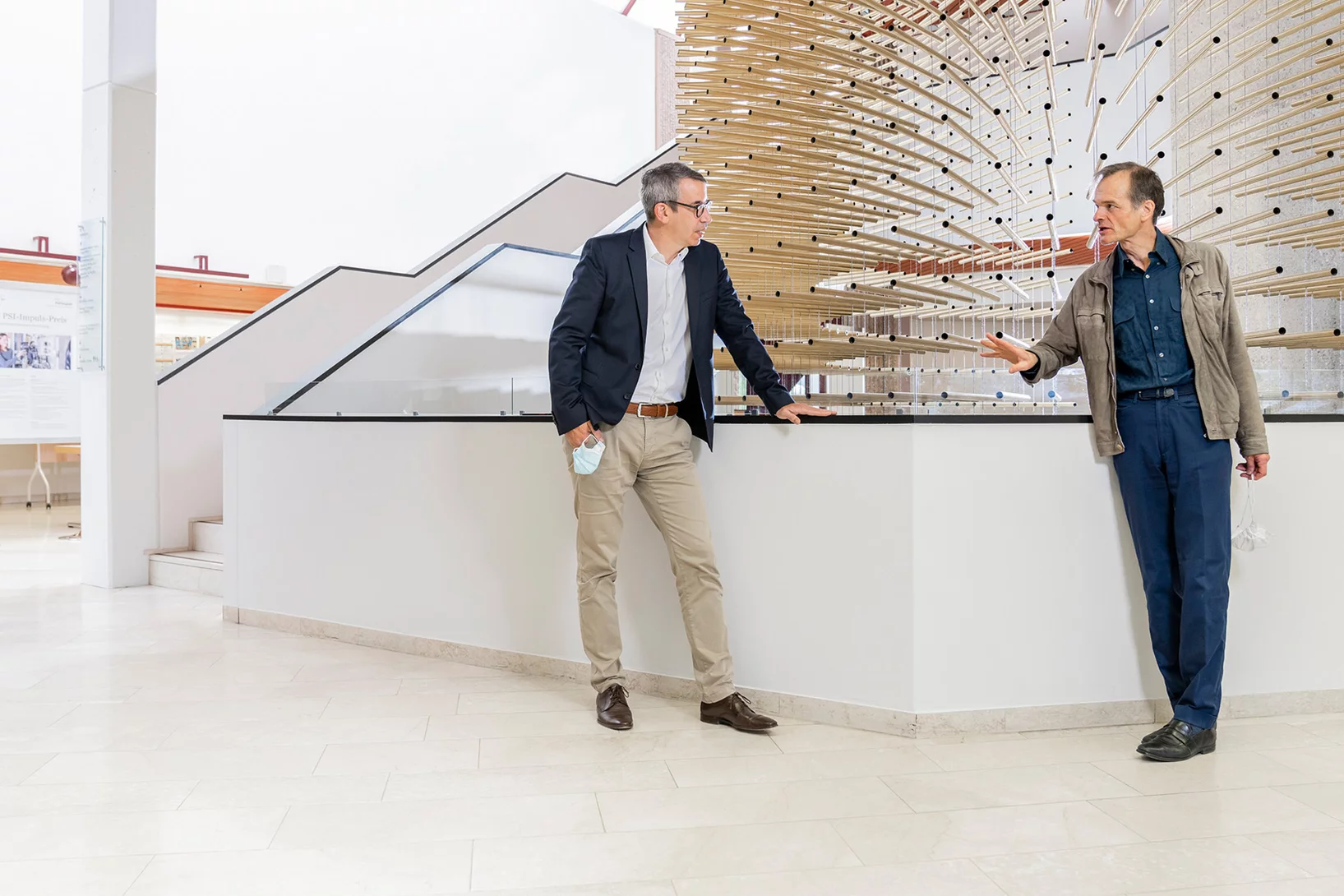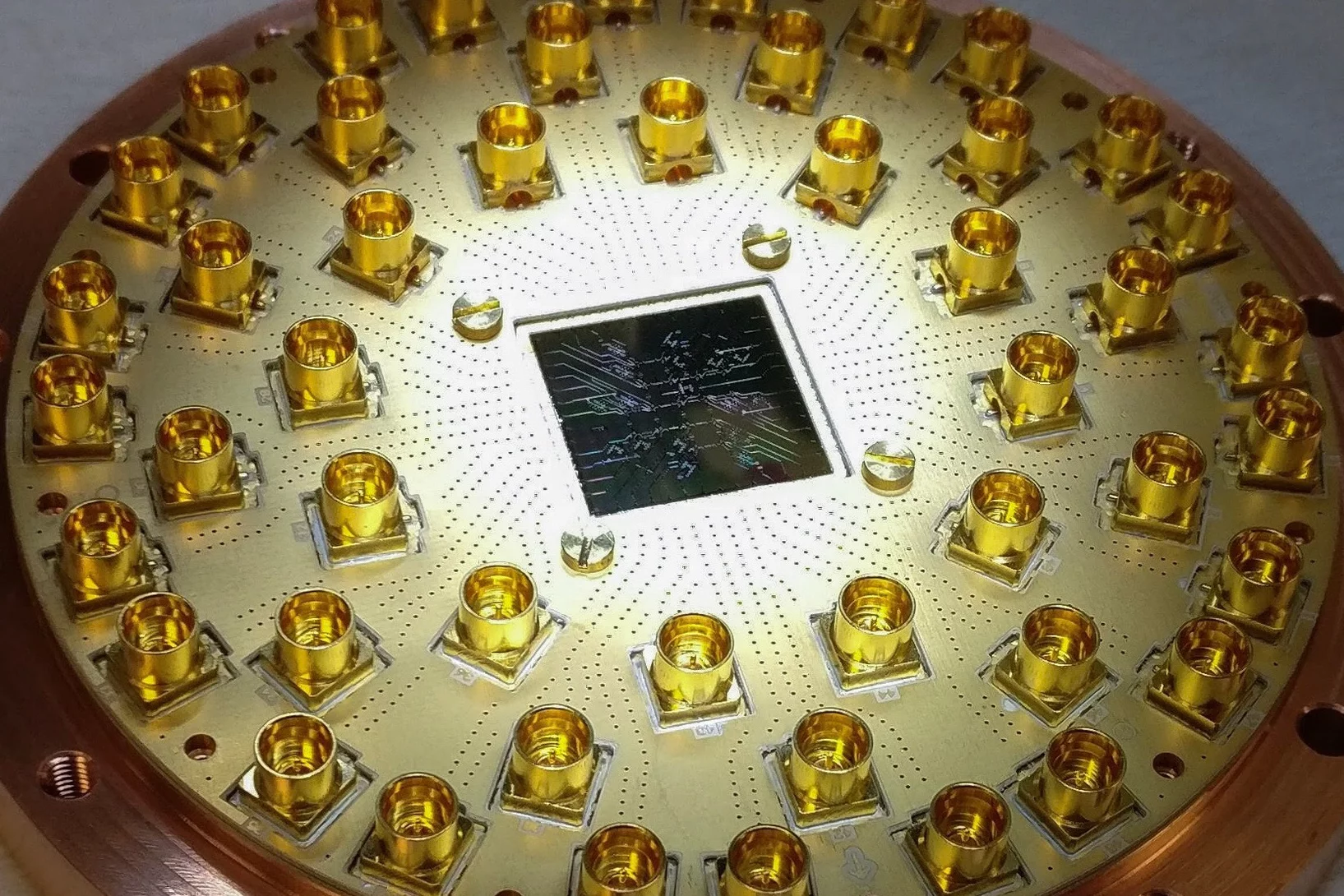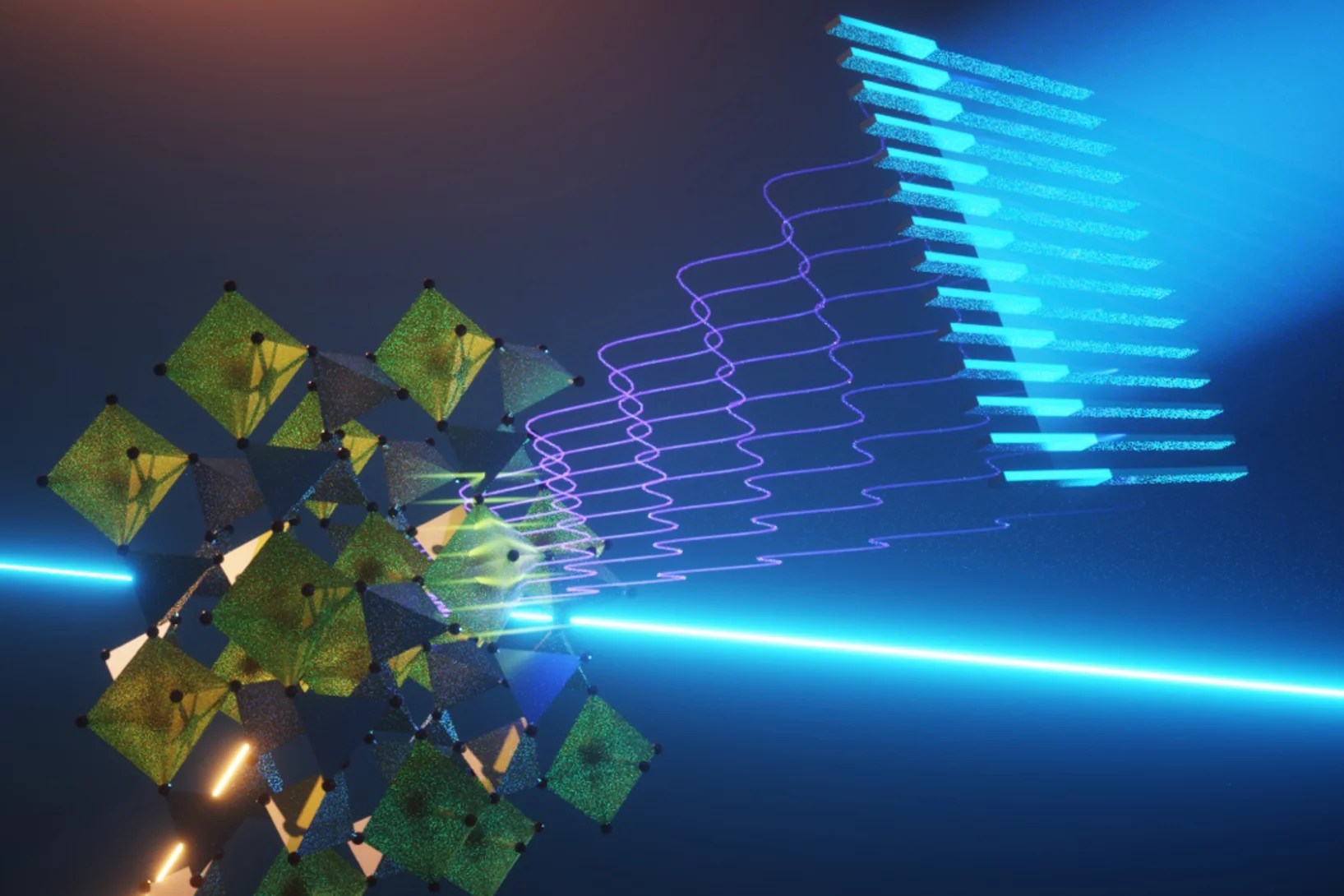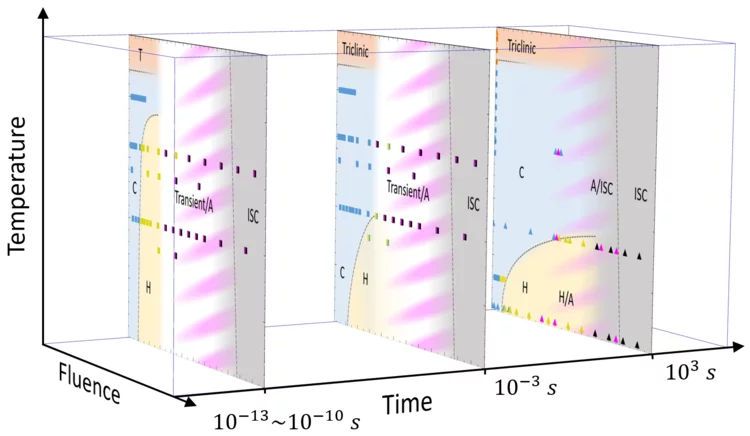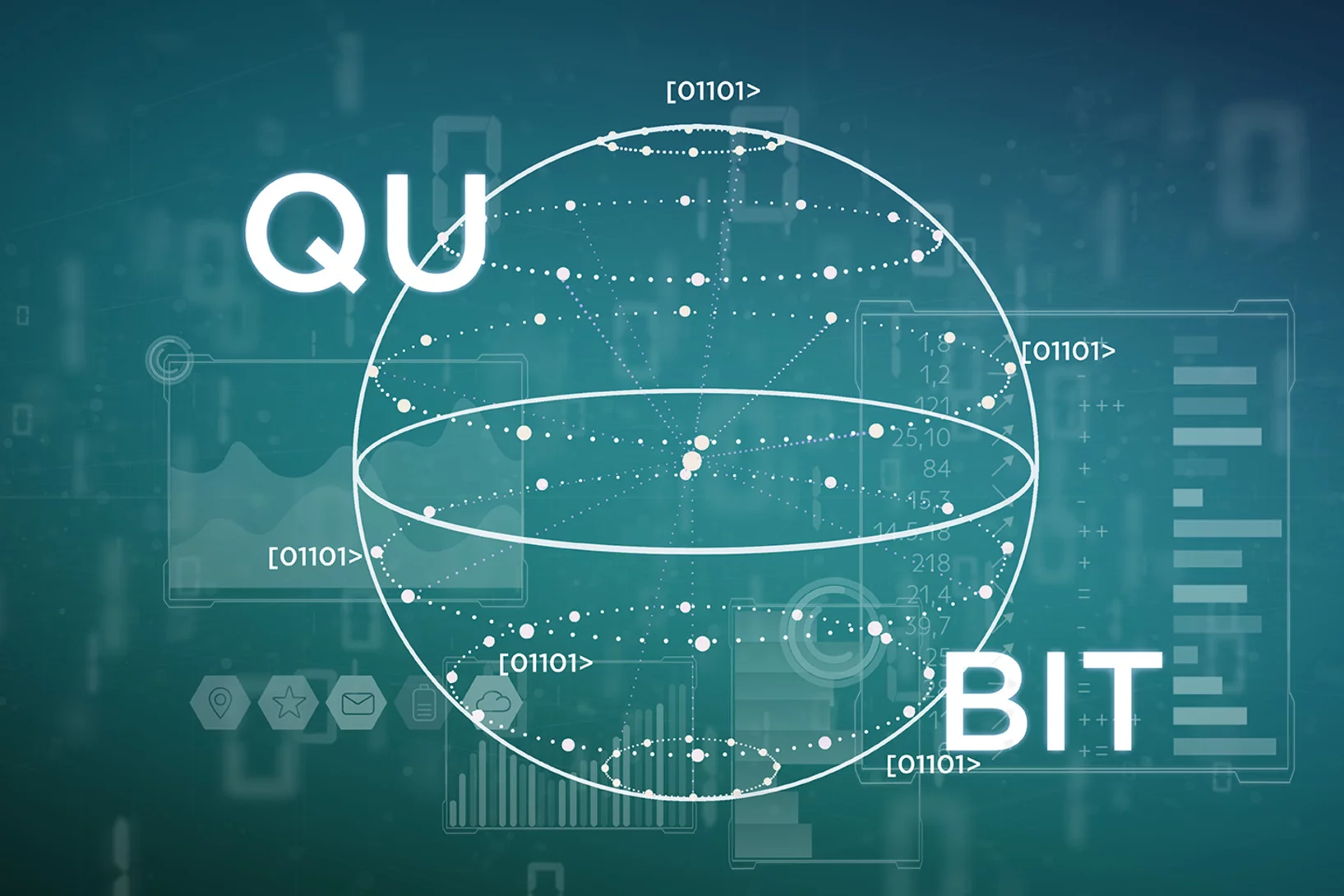De nouveaux matériaux pour les ordinateurs du futur
Des chercheurs identifient et étudient des compositions de matériaux dont les propriétés particulières pourraient permettre de concevoir des puces d’un genre nouveau.
Graphene’s magic in a magnet
Neutron scattering reveals rich magnetic topology in the magnetic equivalent of graphene.
Alexander Grimm wins 2022 Nicholas Kurti prize
We are happy to announce that Alex has been awarded the 2022 Nicholas Kurti Science prize. The prize recognises his work on non-linear effects in Josephson junctions for quantum information processing.
Capturing control errors in quantum annealing
The real-world application of this type of quantum computing gets one step closer with a new method to capture errors while qubits are talking to each other.
Three PSI research facilities reveal magnetic crossover
Insights from the Swiss Muon Source, Swiss Spallation Neutron Source and Swiss Light Source reveal this coveted characteristic in an exotic layered material.
Nickelate superconductors are intrinsically magnetic
Waves of magnetic excitation sweep through this new material whether in superconducting mode or not – another clue to the mystery of loss-less electric currents.
Une solution à l’insoluble
Le PSI et l’ETH Zurich ont créé le Quantum Computing Hub. Des chercheurs de pointe y collaborent au développement d’ordinateurs quantiques.
Athos just got even better
An ambitious upgrade at the soft X-ray beamline of the free electron laser SwissFEL opens up new experimental capabilities.
Plus vite et intelligemment
Le PSI regroupe son expertise en matière d'évaluation des données de recherche dans la nouvelle division de recherché Calcul scientifique, théorie et données.
«Lorsqu’on occupe une certaine position, il ne faut pas se cacher»
Kirsten Moselund dirige le nouveau laboratoire des technologies nanométriques et quantiques. En entretien, elle évoque la recherche quantique au PSI et la contribution que pourrait apporter la nanophotonique.
Spin keeps electrons in line in iron-based superconductor
Electronic nematicity, thought to be an ingredient in high temperature superconductivity, is primarily spin driven in FeSe finds a study in Nature Physics.
Rich electronic features of a kagome superconductor
Spectroscopic insights into the electronic structure of a family of kagome metals bolsters understanding of exotic quantum phenomena
Into the fourth dimension: time-resolved soft X-ray laminography
Combining time-resolved soft X-ray STXM imaging with magnetic laminography, researchers were able to investigate magnetization dynamics in a ferromagnetic microstructure resolved in all three spatial dimensions and in time. Thanks to the possibility of freely selecting the frequency of the excitation applied to the magnetic element, this technique opens the possibility to investigate resonant magneto-dynamical processes, such as e.g. magnetic vortex core gyration and switching, and spinwave emission.
Aperçu de l’avenir magnétique
Des chercheurs du PSI observent pour la première fois un comportement spécifique de la glace magnétique.
Ondes sur des orbites
Une alternative énergétiquement efficace à la transmission des informations grâce au courant électrique
Superconducting qubit first success at Quantum Computing Hub
Andreas Wallraff talks about moving in, refrigerators and measuring the first superconducting qubit at the ETHZ-PSI Quantum Computing hub.
Mobile excitons as neutral information carriers
These quasiparticles have the potential to revolutionise electronics - if they can move. Mobile excitons have now been observed for the first time in a metal.
Opening the door to X-ray quantum optics
The 'perfect' X-ray beam-splitter: Researchers at SwissFEL have an ingenious solution to produce coherent copies of pulses, facilitating a realm of new X-ray techniques.
New insight into unconventional superconductivity
Signatures for a novel electronic phase that enables charge to flow spontaneously in loops have been observed in a kagome superconductor. The findings are published today in Nature.
En route vers des ordinateurs quantiques plus compacts grâce à la topologie
Des chercheurs en quête de qubits particulièrement stables ont étudié en détail la distribution des électrons dans deux semi-conducteurs.
Plusieurs millions d’euros pour la recherche quantique et la recherche sur le cerveau
Le Conseil européen de la recherche approuve des projets du PSI sur le développement d'un calculateur quantique et sur la recherche sur le cerveau pour un montant de 5 millions d'euros.
Les semi-conducteurs atteignent le monde quantique
La technologie des semi-conducteurs pourrait être améliorée et prendre un nouveau virage, grâce à l’exploitation des effets quantiques dans des supraconducteurs.
Contrôle ultrarapide de matériaux quantiques
Utiliser la lumière pour modifier fondamentalement les propriétés des solides
Le pratique dans l’extraordinaire
Niels Schröter se voit décerner un prix de la Société Suisse de Physique (SSP).
Quantum billiards with correlated electrons
Our collaborators at the Jozef Stefan Institute – the leading author, Jan Ravnik, is now a PSI Fellow at LMN – report a study of the electron ordering in equilateral triangle structures via photoexcitation of the prototypical dichalcogenide 1T-TaS2.
«L’objectif est un calculateur quantique expérimental dans le canton d’Argovie»
L’ETH Zurich et l’Institut Paul Scherrer PSI ouvrent conjointement le Quantum Computing Hub. Gabriel Aeppli et Christian Rüegg évoquent ce nouveau centre de recherche.
L’ETH Zurich et le PSI créent un «quantum computing hub»
L’ETH Zurich et l’Institut Paul Scherrer PSI ouvrent un centre commun pour le développement des ordinateurs quantiques. L’objectif est de promouvoir la réalisation d’ordinateurs quantiques aussi bien sur la base de pièges à ions que de composants supraconducteurs.
Une vision par rayons X d’une netteté unique
Un nouveau procédé du PSI permet une étude de physique quantique des matériaux au moyen de lasers à rayons X.
A time-domain phase diagram of metastable quantum states
Our collaborators at the Jozef Stefan Institute – the leading author, Jan Ravnik, is now a PSI Fellow at LMN – report a ‘dynamical’ phase diagram of metastable quantum states generated via photoexcitation of the prototypical dichalcogenide material 1T-TaS2.
L’eau et les aimants quantiques partagent la physique du point critique
À haute pression, l'eau liquide et la vapeur d'eau fusionnent - la frontière de phase disparaît. Les chercheurs ont maintenant découvert un comportement similaire dans un aimant quantique.
